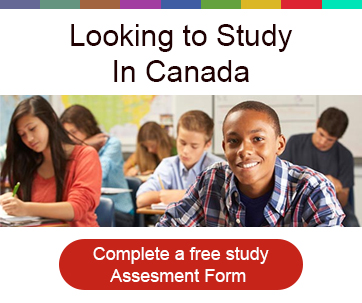Canada is home to a portion of the world’s top instructive organizations.
Canada has a solid and well-subsidized arrangement of state funded instruction, to a great extent oversaw commonly. Thusly, a few parts of the training framework can shift between regions. Be that as it may, as training is directed by the national government, the standard of instruction remains reliably high all through the nation.
There is both an open and private schooling framework in Canada. The Canadian government intensely finances instruction from kindergarten through to the post-auxiliary level, spending by and large right around six percent of its GDP on training. This implies Canada spends proportionately more on instruction than the normal among OECD nations.
As a rule, the training framework is isolated into three levels :
- Primary
- Secondary
- Post-secondary
Private schooling and other tutoring frameworks — for instance, religious schools — are additionally accessible at all three levels.
Did you know?
Canada is one of the most well read nations on the planet. In 2015, 90 percent of individuals in Canada matured 25 to 64 had in any event finished secondary school, and 66 percent had gotten a post-optional instructive qualification.
Primary Education
Otherwise called primary school, this level keeps running from Kindergarten or Grade 1 (ages six to seven) and goes through to Grade 8 (ages 13 to 14). The school year typically keeps running from September through to the next June.
Secondary Education
Otherwise called secondary school, this level keeps running from Grade 9 (ages 14 to 15) to Grade 12 (ages 17 to 18). Ontario has a Grade 12+. In Quebec, understudies go to secondary school until the age of 16. They may then continue to CEGEP, a freely subsidized two-year school where understudies may seek after either a college arrangement recognition, or a professional confirmation.
Post-secondary Education
Canada has a wide system of schools and colleges, offering the absolute best post-auxiliary instruction around the world.
Canada has numerous globally perceived college projects situated in both urban and provincial areas all through the country. Degrees granted from Canadian colleges are commonly perceived as equal to those from different colleges around the world.
The college year more often than not keeps running from September to April or May, and is contained two semesters, or terms. Many post-auxiliary foundations offer the choice of taking courses in a third semester throughout the late spring months. As a rule, understudies may start an examination program at a college in September (much of the time), or in January.
School projects may keep running consistently, and understudies might probably start a course at different focuses during the year.
Training in English and French
Global understudies may examine in both of Canada’s two authority dialects. A few organizations may offer guidance in the two dialects, in spite of the fact that understudies don’t should be conversant in the two dialects to go to class at any level in Canada.
Crosswise over the vast majority of Canada, the fundamental language of school-level instruction is English. In any case, French-language instruction is broadly accessible all through the nation. Notwithstanding the principle language of guidance, French or English as a subsequent language is by and large educated since the beginning.
In the event that a youngster’s mom or father sought after basic investigations in English in Canada;
In the event that a sibling or kin/s, has gotten the significant piece of their rudimentary or optional school guidance in English in Canada (if the mom or father is a Canadian resident);
In the event that a kid’s mom or father went to class in Québec after August 26, 1977, and could have been announced qualified for guidance in English around then (if the youngster’s mom or father is a Canadian resident).






